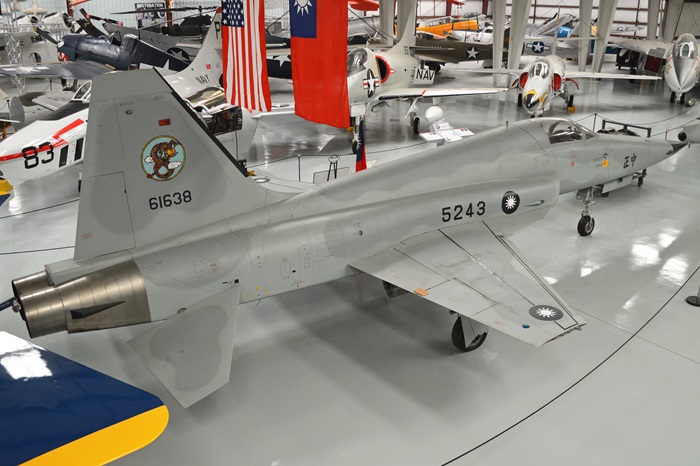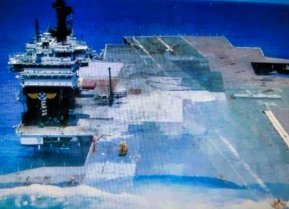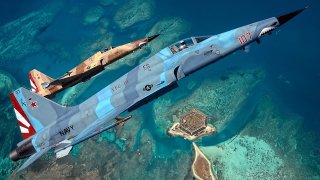F-5: The Cheap Fighter That Could Do It All
Although the airframe only sees limited service in the U.S. Air Force today, the F-5 has been widely exported throughout the globe.
Meet the F-5 Fighter Jet: Earlier in March, the Air Force Heritage Flight Foundation welcomed the addition of the F-5E Tiger fighter to its aircraft lineup.
The non-profit organization provides Heritage Flights to the public, with performances incorporating a range of historical airframes that flew in World War II, Korea and Vietnam.
Since the legendary F-5 played a significant role in training some of the most prolific pilots in the modern era, its inclusion in the honorable Heritage Flight program is a no brainer.
Although the airframe only sees limited service in the U.S. Air Force today, the F-5 has been widely exported throughout the globe.
The platform’s affordability and versatility have helped make it a mainstay of modern fighter fleets.
A brief history of the F-5 Fighter
The F-5 light fighter’s initial design conception dates back to the post World War II-era. When the North Atlantic Treaty Organization (NATO) called for a lightweight tactical fighter capable of sporting both conventional and nuclear ordnance, the manufacturer Northrop Grumman went to work.
By 1955, the General Electric J85 turbojet engine was incorporated into the airframe’s design.
The powerful engine was originally designed for use on the Boeing B-52 Stratofortress and was considered more advanced than its near-peers since its thrust-to-weight ratio was much greater.
Simply put, the F-5 was cheap and versatile
Capable of reaching speeds of Mach 1.63 with a range of 554 miles, the F-5 was an Air Force favorite. The fighter could climb at a rate of around 35,000 feet per minute and could sport two 20mm M39A2 Revolver cannons.
Although the jet was intended to function as a day air superiority airframe, its ground-attack capabilities also highlighted the F-5’s versatility. The F-5A platform entered service with the Air Force in the early 1960’s and more than 800 airframes were produced for American allies until the mid-1970’s.
Introducing the second-generation F-5EII Tiger
As the USSR threat continued to increase at the height of the Cold War, the U.S. government desired a better air-to-air jet that could go head to head against the Soviet MiG-21. In 1970, Northrop was selected as the International Fighter Aircraft winner to produce a newer variant of the F-5A.
The second-generation F-5E Tiger II fighter featured a range of upgrades including newer engines, greater wing area, higher fuel capacity and enhanced avionics. The new F-5 variant was used extensively in combat during the Vietnam War.
By the late 1980’s, more than 1,400 F-5E Tiger fighters were produced.
The F-5 family of fighters was easily exported
The F-5’s versatility and cheaper maintenance costs made it a prime candidate for export. In fact, the fighter has been procured by nations in every corner of the globe, including South Korea, Brazil, Taiwan and Honduras.

While the F-5 may have seen more action in the fleets of foreign air force’s, the fighter is the ancestor of the recognizable American T-38 jet.
As the world’s first and most produced supersonic trainer, the T-38 Talon represents another incredible U.S.-made feat. In the future, the Talon will likely join its F-5 predecessor in the Air Force’s Heritage Flight Foundation program.

Maya Carlin is an analyst with the Center for Security Policy and a former Anna Sobol Levy Fellow at IDC Herzliya in Israel. She has by-lines in many publications, including The National Interest, Jerusalem Post, and Times of Israel.
All images are Creative Commons.


